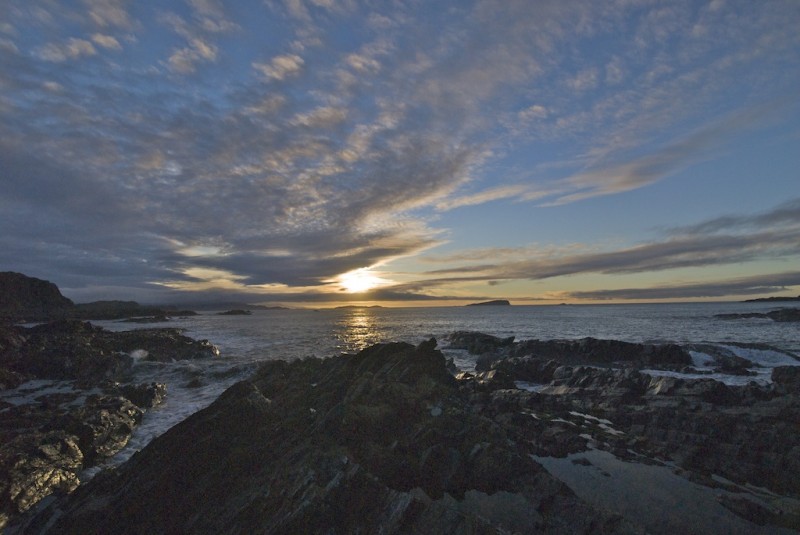
St Brendan and the Garvellachs
There must have been a very strong instinct among Irish noblemen and priests in the 6th century AD that inspired them to set sail into uncharted waters in search of divine fulfilment.
 You only have to look at a map of the west coast of Scotland to see that it’s dotted with the remains of religious settlements founded by these brave and earnest missionaries. St Columba, of course, is the name that first springs to mind… he was the founder of the monastery on Iona, which became the centre from which Christianity spread throughout western Scotland.
You only have to look at a map of the west coast of Scotland to see that it’s dotted with the remains of religious settlements founded by these brave and earnest missionaries. St Columba, of course, is the name that first springs to mind… he was the founder of the monastery on Iona, which became the centre from which Christianity spread throughout western Scotland.
But there were lots of other Irish saints whose daring deeds didn’t get quite the same publicity. Among them is St Brendan, who was born in County Kerry in 484 AD. As a small boy he was educated by Saint Ita, a nun who taught ‘faith in God with purity of heart, simplicity of life with religion, and generosity with love’; later, Brendan was taught by Saint Erc, who ordained him as a priest in 512.
Brendan was responsible for building monastic ‘cells’ at Ardfert in County Kerry, where a beautiful cathedral was later erected in the 13th century. He established several monasteries around the River Shannon and on the west coast of Ireland, but these achievements obviously didn’t satisfy his inborn wanderlust.
Having gathered a band of followers, Brendan set sail from Seana Cill at the foot of Mount Brandon (Brendan’s hill) on a seven-year quest for the ‘Isle of the Blessed’. Although there’s little contemporary evidence for the route that he took, his travels are described in a ninth century Irish tale, ‘The Voyage of St Brendan the Navigator’.
 If St Brendan was describing his experiences today, he would probably be derided as a raving lunatic. This devout and intrepid little group in their timber-framed currach were ‘raised up on the back of sea monsters’ and ‘passed by crystals that rose up to the sky’. When they ventured too close to an unnamed island, they were pelted by the inhabitants with flaming, foul-smelling rocks. Just think what St Brendan could have done with a mobile phone and a Twitter account.
If St Brendan was describing his experiences today, he would probably be derided as a raving lunatic. This devout and intrepid little group in their timber-framed currach were ‘raised up on the back of sea monsters’ and ‘passed by crystals that rose up to the sky’. When they ventured too close to an unnamed island, they were pelted by the inhabitants with flaming, foul-smelling rocks. Just think what St Brendan could have done with a mobile phone and a Twitter account.
In 1976, a British navigator called Tim Severin embarked on a 4,500-mile sea journey in an attempt to prove that Brendan’s claims were based on fact. He built a 36-foot, two-masted replica of Brendan’s currach out of Irish ash and oak, and set sail from the Dingle Peninsula in Ireland. He had encounters with humpback whales, which were probably Brendan’s ‘sea monsters’; he witnessed icebergs – the ‘crystals that rose up to the sky’; and he also landed in Iceland, which makes a good case for being the origin of the foul-smelling volcanic rocks.
So what has St Brendan got to do with the Garvellachs, a group of rocky, uninhabited islands in the Firth of Lorn? His boat must have found its way to these turquoise waters, because he founded a monastic settlement on the largest island, Eileach an Naoimh (‘isle of the saints’), in 542. Amazingly, the evidence still survives in the remains of ‘beehive cells’, so called because of their conical shape.
We took a boat trip out to the Garvellachs (in Gaelic, Garbh Eileach, meaning ‘rough isles’) in August 2011. We travelled with Seafari, a tour operator which sails regularly from Ellenabeich on Seil Island. After a 20-minute crossing in brilliant sunshine, the boat docked in a small inlet and we clambered up the boulders to explore.
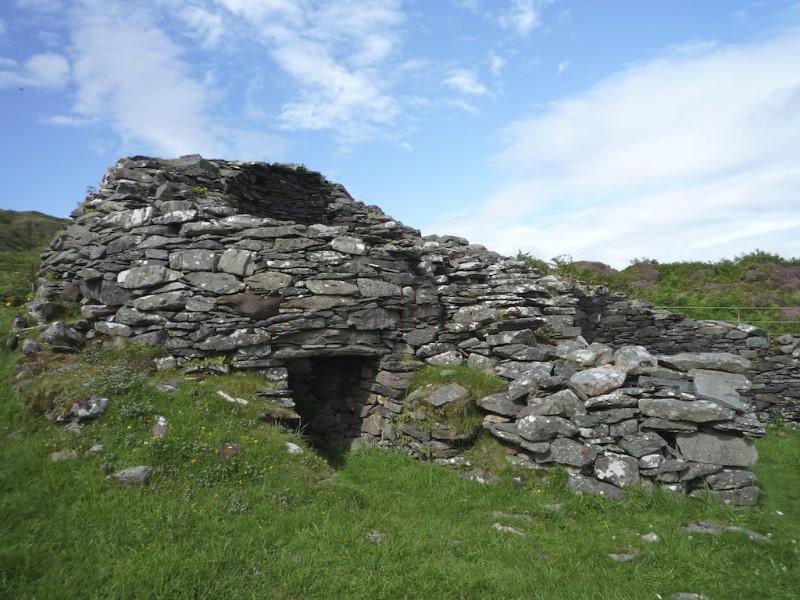 The beehive cells are amazingly well preserved – in fact, one of them at least has been sympathetically re-constructed. They are open to the sky, but of course the domed roof would have been complete in St Brendan’s day. I found it hard to decide if they would have been snug, secure living spaces or a dark claustrophobic nightmare. But whatever the living conditions, there’s a sense of pure piety – as if the memories are there, but impossible to access.
The beehive cells are amazingly well preserved – in fact, one of them at least has been sympathetically re-constructed. They are open to the sky, but of course the domed roof would have been complete in St Brendan’s day. I found it hard to decide if they would have been snug, secure living spaces or a dark claustrophobic nightmare. But whatever the living conditions, there’s a sense of pure piety – as if the memories are there, but impossible to access.
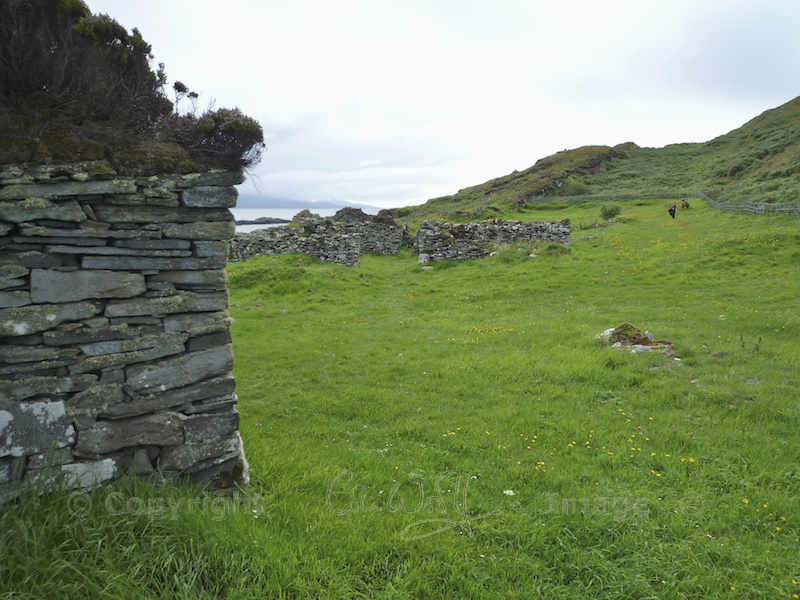 Wherever you set foot in the Garvellachs, you’re treading on ancient history. There’s the roofless ruin of a 12th century chapel – stone-built, moss-covered and amazing; the remains of a later monastery and domestic buildings, all covered with the silvery-green fronds of lichen; and an early Christian graveyard, which at the time of our visit was a mass of wild flowers. High on a natural ridge with stunning views out to sea is a small slab, engraved with a simple cross; this is said to mark the grave of Eithne, St Columba’s mother.
Wherever you set foot in the Garvellachs, you’re treading on ancient history. There’s the roofless ruin of a 12th century chapel – stone-built, moss-covered and amazing; the remains of a later monastery and domestic buildings, all covered with the silvery-green fronds of lichen; and an early Christian graveyard, which at the time of our visit was a mass of wild flowers. High on a natural ridge with stunning views out to sea is a small slab, engraved with a simple cross; this is said to mark the grave of Eithne, St Columba’s mother.

St Brendan didn’t spend that long in Scotland. Three years later, he is reported to have returned to Ireland to establish more churches in Galway and County Mayo. He died in 577 at the venerable age of 93. His is a remarkable story: in those days, people with ambitions such as his didn’t usually survive until middle age. What a life Brendan had – what places he’d seen, and what memories must have died with him. I think he would have been worth talking to.
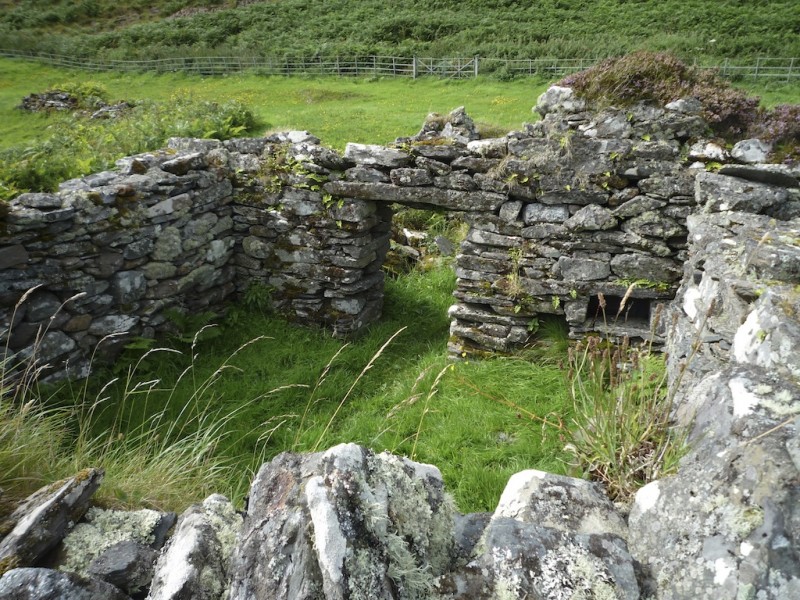 The Garvellachs were inhabited until the 19th century, when they were home to a small farming community. Now they play host to a few sheep, thousands of sea birds and occasional overnight campers on kayaking trips (our daughter, Leonie, among them). The Garvellachs are a Site of Special Scientific Interest and form part of the Firth of Lorn Special Area of Conservation; the ruins are in the care of Historic Scotland.
The Garvellachs were inhabited until the 19th century, when they were home to a small farming community. Now they play host to a few sheep, thousands of sea birds and occasional overnight campers on kayaking trips (our daughter, Leonie, among them). The Garvellachs are a Site of Special Scientific Interest and form part of the Firth of Lorn Special Area of Conservation; the ruins are in the care of Historic Scotland.
There has been speculation that St Brendan’s party crossed the Atlantic and landed in Newfoundland, but so far no real evidence has been produced. However, stone carvings in West Virginia dating from between 500 and 1000 AD have been examined by experts who claim that they are written in Old Irish, using the Ogham alphabet. One historian believes that they may have been carved by the first Irish missionaries in the wake of St Brendan’s voyage… but there is no documentary evidence to back this up.
Getting to the Garvellachs
The Garvellachs lie to the south of Mull and to the north-west of Scarba in the Firth of Lorn. You can book a day trip with a local tour operator such as Seafari Adventures or Craignish Cruises. Sailings are dependent on the weather.
Sources:
Images copyright © Colin & Jo Woolf
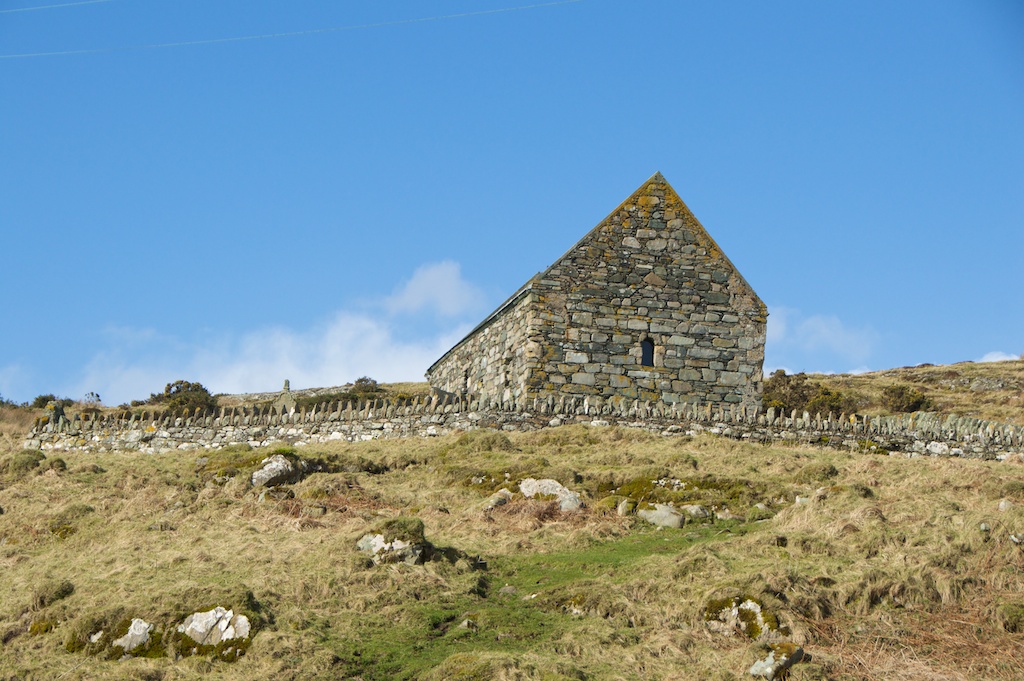
More ancient and holy sites in Argyll:
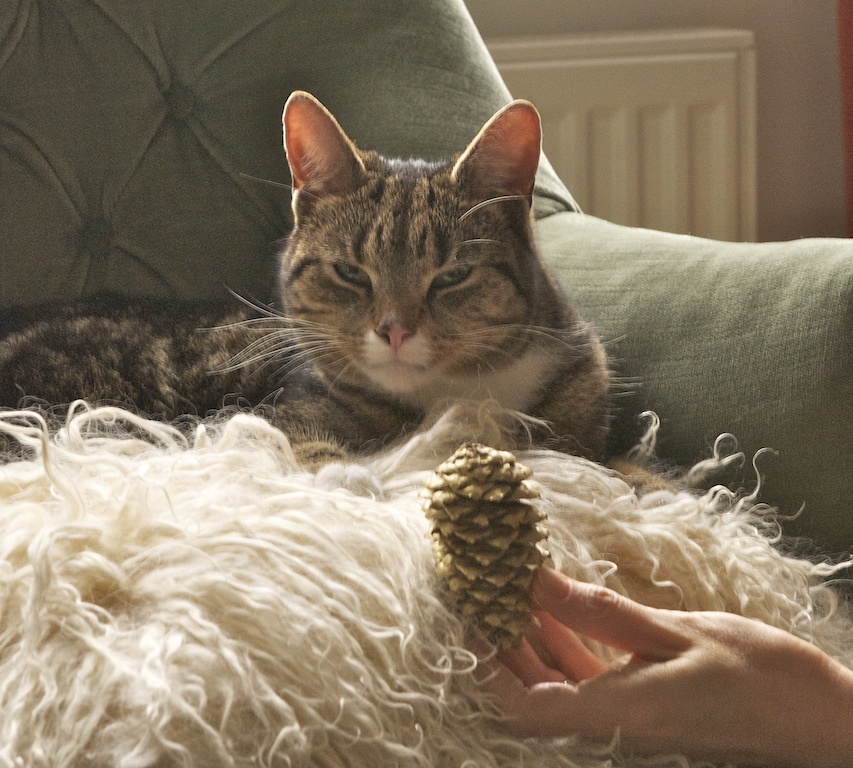
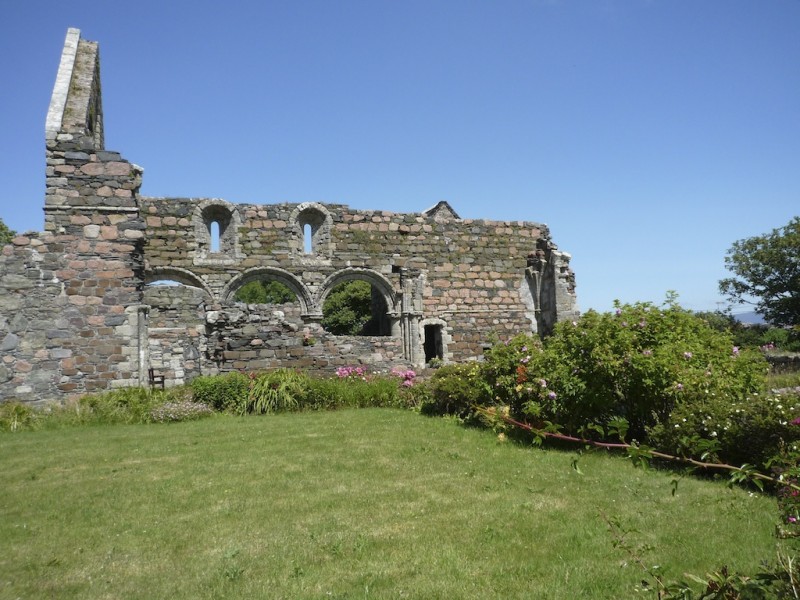

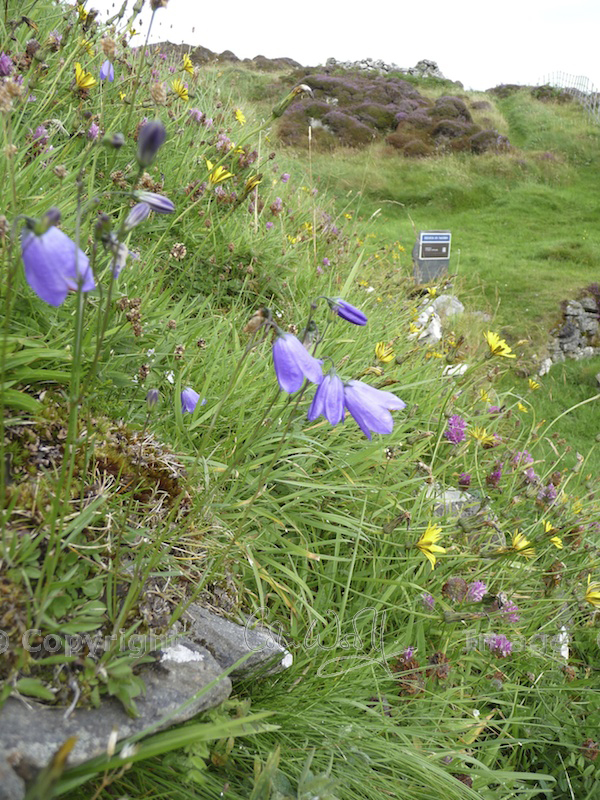
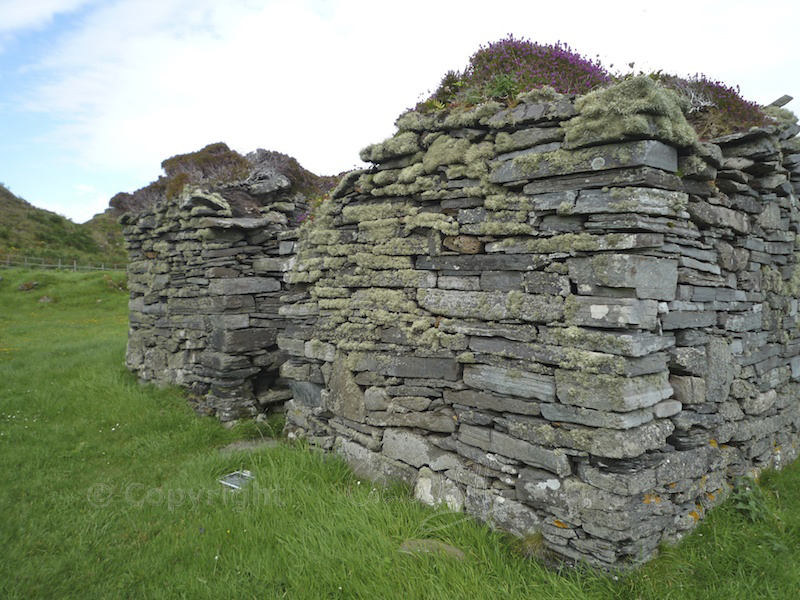
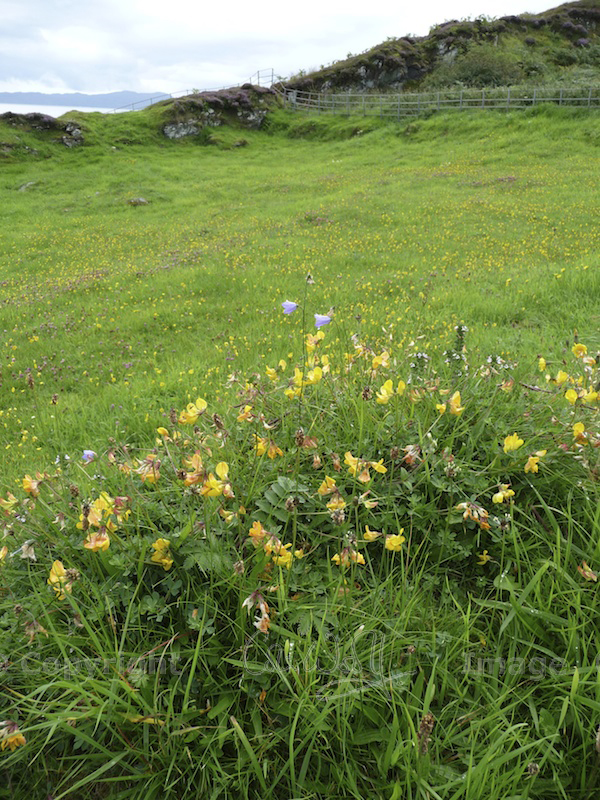
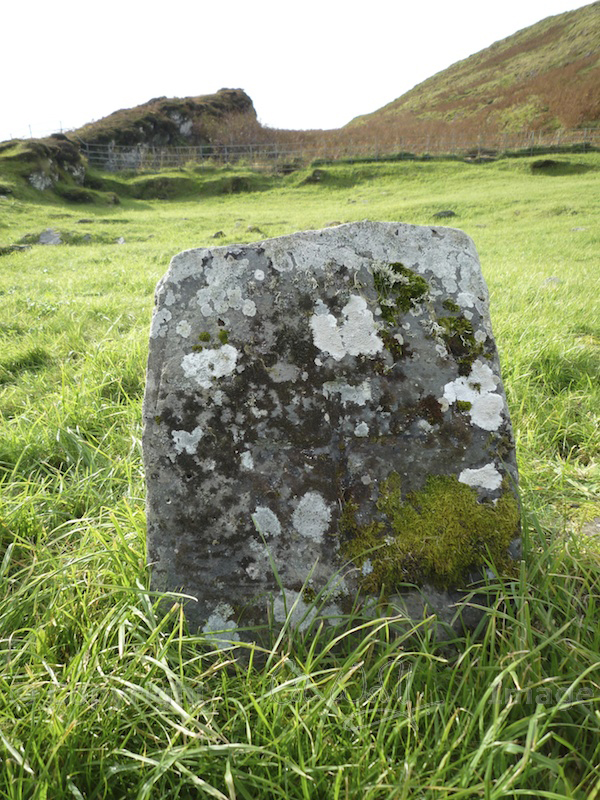
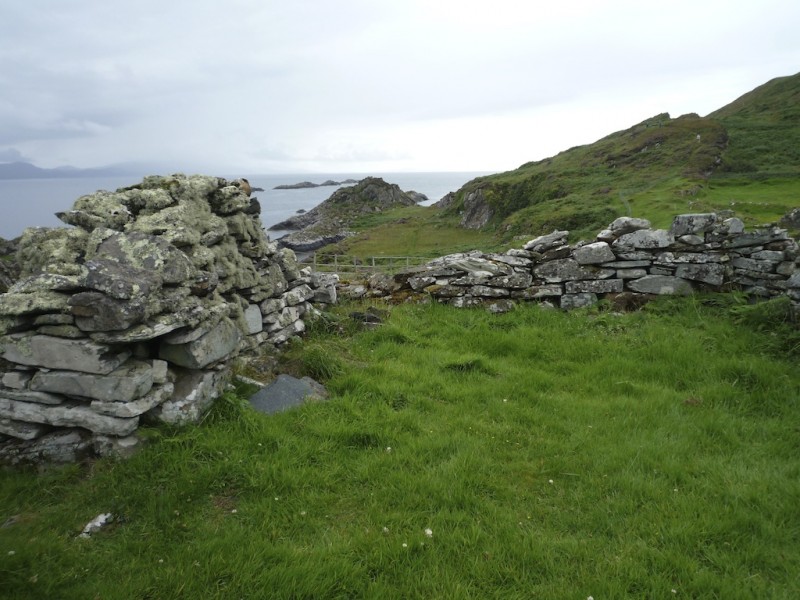
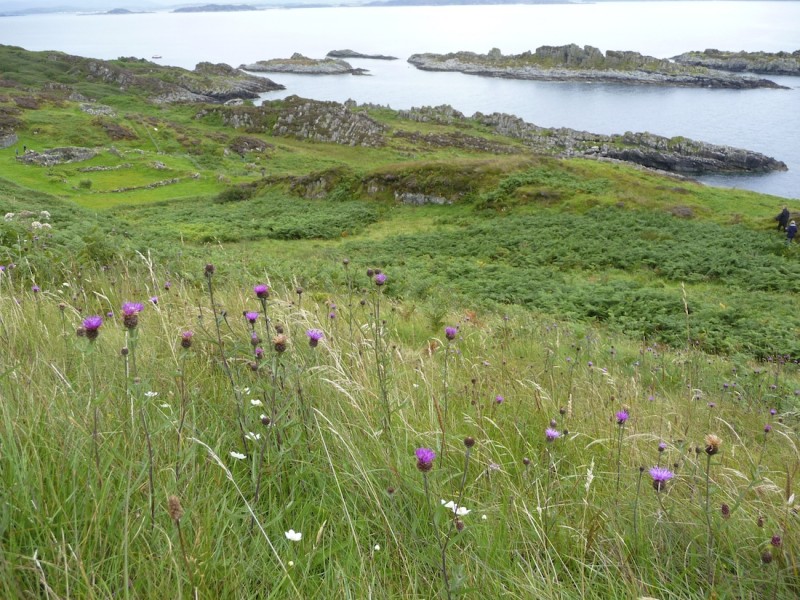
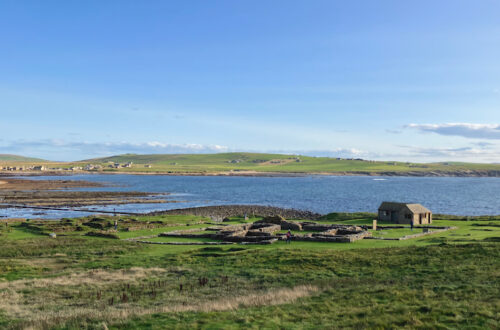
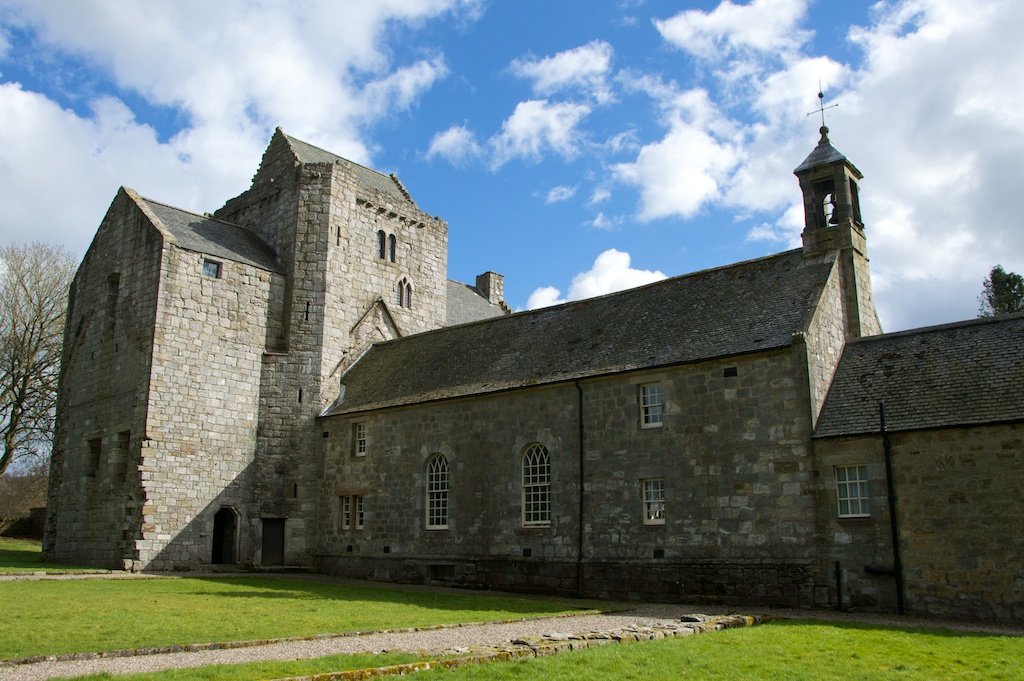
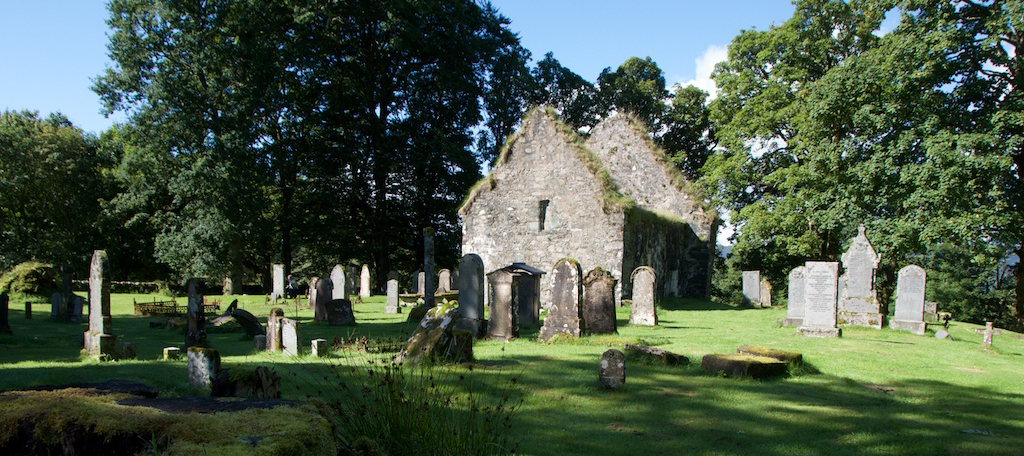
22 Comments
housesandbooks
Beautiful photographs, lovely text. Thank you!
Jo Woolf
Thank you – glad that you enjoyed it.
dhphotosite
With so many fantastic places to visit, I wouldn’t know where to start! Thanks for another great tour!
Jo Woolf
It’s just a case of getting the time… and the weather! We were so lucky with the Garvellachs – we almost cancelled because of the wet & windy morning, and then we just had a few hours of sunshine before the heavens opened again.
Homestead Ramblings
This is so wonderful, most amazing these places still exist for us to see.
Jo Woolf
It certainly is – this is one of the most special places we’ve been lucky enough to visit.
mizjo317
Oh my Lord, Jo, there’s so much beauty there and I’m not anywhere near. Gorgeous post, you must have had such a great time doing it. I love receiving your posts, always stir up my wanderlust.
Jo Woolf
Thank you! It makes me want to go there again, too… there is just so much history (and wildlife) out there, you just need the time to explore it all.
MindMindful
I really enjoy your photo essays. There’s an account of the re-creation of St. Brendan’s voyage, in Nat’l Geographic, mid-70’s — a fascinating story! Lovely photos……….
Jo Woolf
Thank you, I’m glad that you liked it. Thanks also for the reference! There is a book by Tim Severin who re-created the voyage, which I might look up – it sounds interesting.
MindMindful
I haven’t read that book, but the article is really good. I find it so fascinating — many the myth images of St B were shown to have been realistically possible –> the bit about the whales, for instance.
Spiral Dreamer (Francis)
What a beautiful site, I love the pictures and the history. I subscribed and I will be back often.
Jo Woolf
Thank you very much, and thanks for subscribing! I hope you enjoy the features. I’ll take a look at your own blog too.
I hope you enjoy the features. I’ll take a look at your own blog too.
andy1076
So beautiful landscapes

Jo Woolf
Yes, it’s an amazing place – we were so lucky.
tearoomdelights
I wish history at school had been this interesting, I didn’t know any of this and it’s a fascinating tale, beautifully told. Your lovely photos really made the place come alive, I could just image being there myself. Travelling there by kayak and camping overnight would be amazing.
Jo Woolf
So do I wish they’d taught this kind of history at school! Thank you – I’m glad you enjoyed it. We would love to paddle over there but I’m not sure my skills are up to it. There are some closer islands, though, that we’re aiming for sometime this year.
tearoomdelights
Perhaps you can work up to it, I’m sure it’ll just be nice to get out onto the water when the weather’s better. So calm and quiet…..lovely!
mysearchformagic
Wow this place looks amazing. New to me, I would love to go one day, although a bit of a trek from the big smoke…
Jo Woolf
It’s so beautiful – getting there is more of a pilgrimage than a trip, but that is what makes it so special!
Candia
Thanks for the memories. My friend took us there in July 1982, sailing from his jetty in Luing. It was calm as a millpond and hot and sunny. My 6 month old baby daughter sat in her babychair on board. We wandered around and it was utterly idyllic. Will never forget the experience.
Jo Woolf
Most welcome, Candia. What a lovely trip you must have had, and thank you for sharing your memories. I know how idyllic it is, and I will never forget it either!